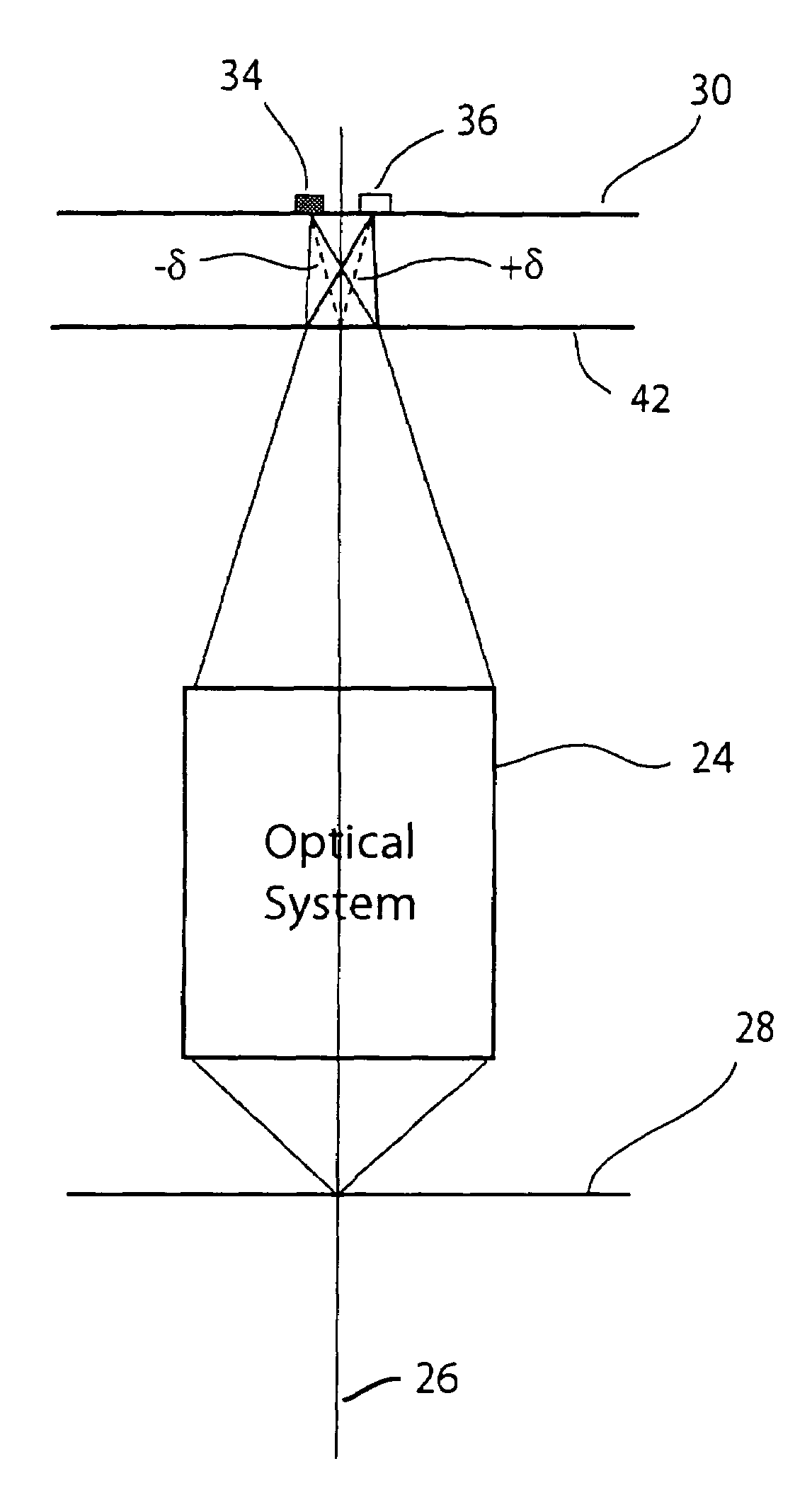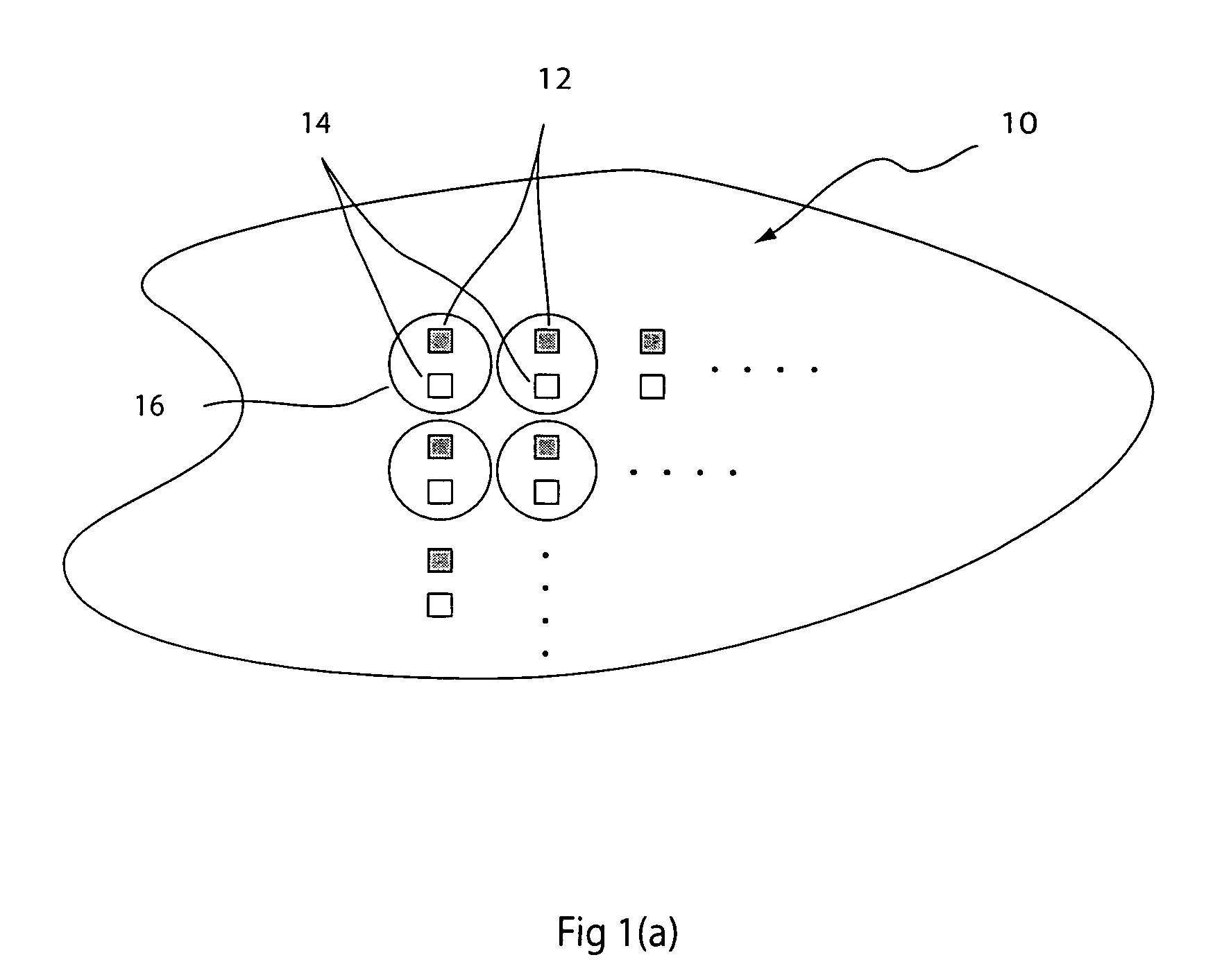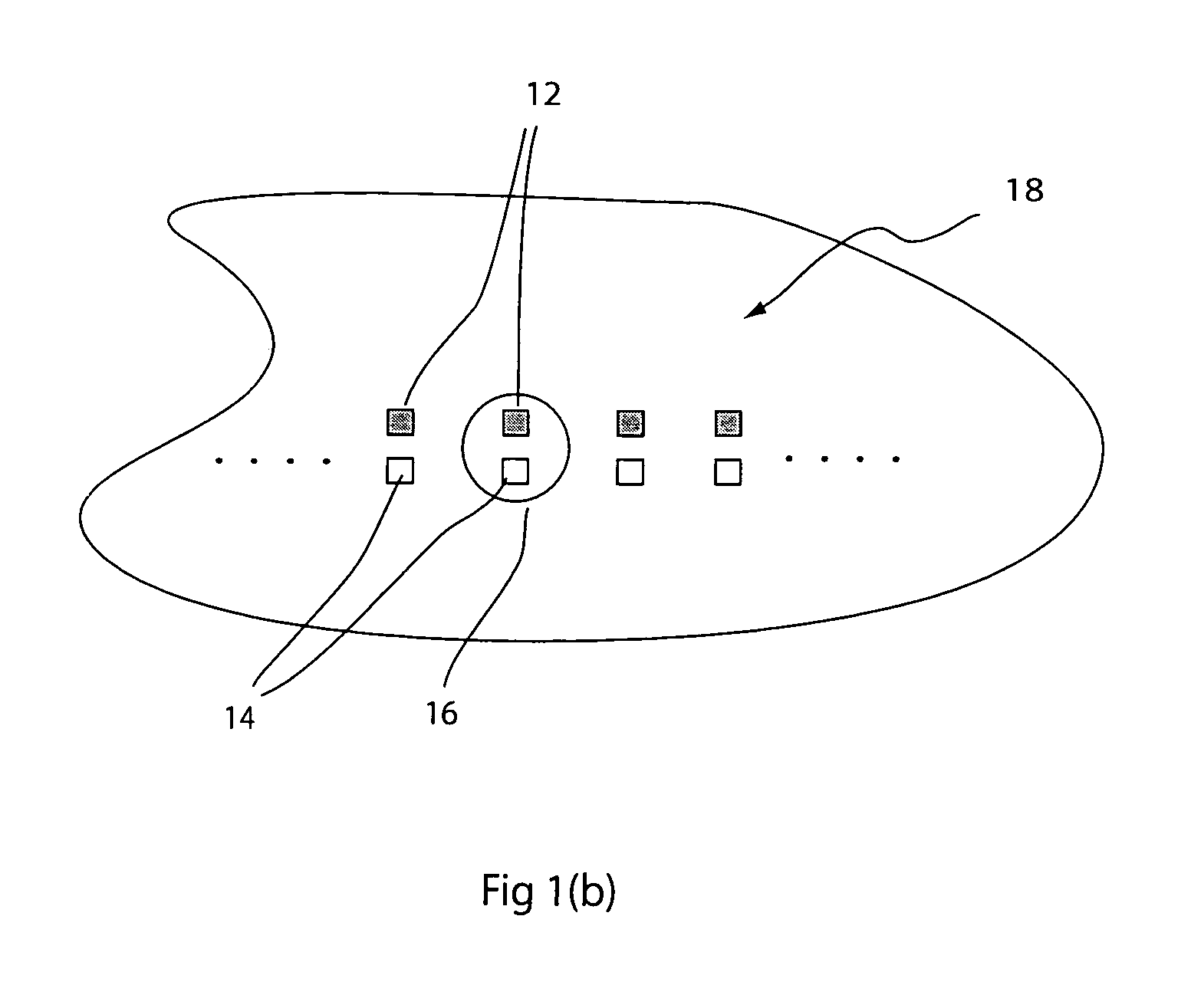Imaging system with an integrated source and detector array
an imaging system and detector array technology, applied in the field of illumination for optical imaging systems, can solve the problems of ineffective use of dia-illumination, new challenges for illumination, and inability to use prior art epi-illumination techniques
- Summary
- Abstract
- Description
- Claims
- Application Information
AI Technical Summary
Benefits of technology
Problems solved by technology
Method used
Image
Examples
embodiment 23
[0028]The embodiment 23 shown in FIG. 8 is similar to that shown in FIG. 2, except that the source 35 is in one plane 31 and the detector 37 is in another plane 33.
first embodiment
[0029]While this first embodiment does not provide optimal light efficiency, it is simple, compact, and straightforward to manufacture. It can be implemented with either a one-dimensional array, as shown in FIG. 1(b) or a two dimensional array, as shown in FIG. 1(a). To increase light efficiency, multiple detectors surrounding the light source within the central lobe of the image could be used. Also, the optical system can be designed to have desired aberrations so as to produce a non-symmetric PSF and maximize the light irradiating the detector area. As will be understood by a person skilled in the art, there are various ways of accomplishing this, including, for example, forming lenses with aspherical surfaces and decentering the elements of the optical system.
[0030]A second embodiment 40 of a one-dimensional integrated source and detector array illumination system, shown in FIG. 3, uses a diffraction element to separate the illumination light from the image light at image plane. ...
third embodiment
[0031]In a third embodiment, conjugate points on the image plane can be formed by a Wollaston prism. As shown in FIG. 4, a quarter wave plate 44 may be placed in front of a Wollaston prism 46 at an angle to the two eigenaxes thereof so that the optical pathway is split into two pathways having respectively orthogonal polarizations and respective angles of refraction, as indicated by the dot 48 and arrow 50. This requires either that the source 36 produce light that is linearly polarized in the direction represented by dots 48, or that a linear polarizer 49 be used to produce such linear polarization. The source light is then circularly polarized in one direction by the quarter wave plate, circularly polarized in the opposite direction upon reflection from the object, then linearly polarized in the direction of arrows 50 by the quarter wave plate. Thus, this arrangement creates two conjugate points in the image plane that correspond to a light source 34 and photo-detector 36, respect...
PUM
 Login to View More
Login to View More Abstract
Description
Claims
Application Information
 Login to View More
Login to View More - R&D
- Intellectual Property
- Life Sciences
- Materials
- Tech Scout
- Unparalleled Data Quality
- Higher Quality Content
- 60% Fewer Hallucinations
Browse by: Latest US Patents, China's latest patents, Technical Efficacy Thesaurus, Application Domain, Technology Topic, Popular Technical Reports.
© 2025 PatSnap. All rights reserved.Legal|Privacy policy|Modern Slavery Act Transparency Statement|Sitemap|About US| Contact US: help@patsnap.com



